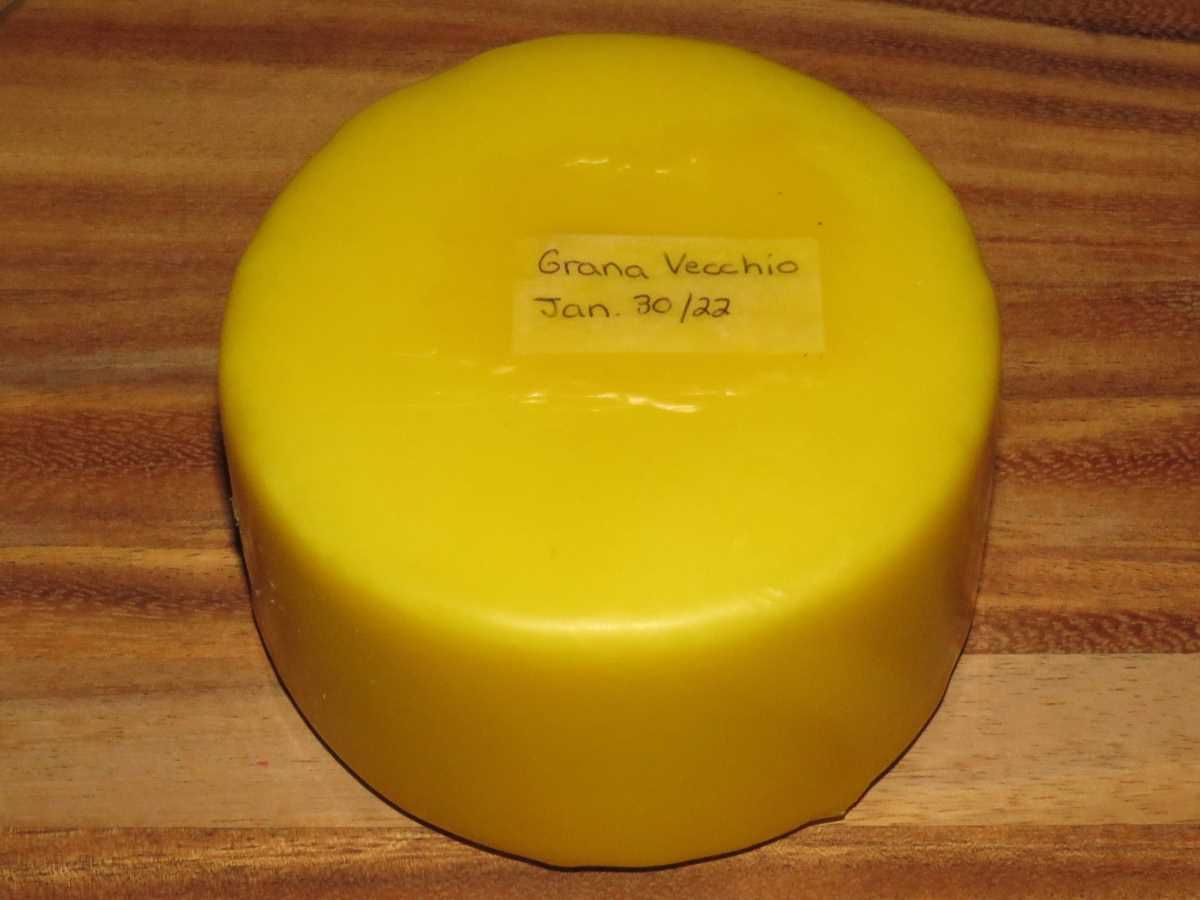Here are the photos of the make.... After warming the milk to 99*F we added the Calcium Chloride and Su Casu culture....
.JPG?width=1920&height=1080&fit=bounds)
During the 45 min. ripening, we covered it with a towel and maintained the temperature....
.JPG?width=1920&height=1080&fit=bounds)
After adding 1/4 tsp. of Rennett, we used the spinning bowl Flocculation test.... It gelled in 8 minutes, so I adjusted the recipe to 3/16 tsp....
.JPG?width=1920&height=1080&fit=bounds)
After a Floc. Multiple of 2.5 X, (20 minutes) we expected and got a slightly "sloppy" break....
.JPG?width=1920&height=1080&fit=bounds)
I cut the curd into 1" columns, and jiggled the vat gently to separate them and start expelling the whey during a 5 minute resting period....
.JPG?width=1920&height=1080&fit=bounds)
I then used my horizontal curd cutter to cut the columns into 1/4" thick layers, and rested another 5 minutes....
.JPG?width=1920&height=1080&fit=bounds)
During that 5 minutes I twisted and swirled the vat gently to separate the cubes and accelerate the release of the whey....
.JPG?width=1920&height=1080&fit=bounds)
I used a balloon whisk with the wires bent to a 1/4" spacing to break up the curds to pea sized....
.JPG?width=1920&height=1080&fit=bounds)
This was followed by 15 minutes of stirring, still at 99*F, to get the curds as uniform as possible and continue whey release....
The curds sank quickly as soon as you stopped stirring them, with just a slight tendency to clump together....
.JPG?width=1920&height=1080&fit=bounds)
At this point, the curds were fairly uniform, firmed up nicely, and not easily damaged.... Now they were raised to 131*F over 45 minutes (~3*F each 5 min.)....
The photo below was taken at the beginning of heating, by the end they were half that size and cooked completely through....
.JPG?width=1920&height=1080&fit=bounds)
The next stage was to remove the vat from the heat, cover it and allow to cool slowly over a 2 hour period.... This causes the curds to shrink even more and increase in acidity....
After the 2 hours, they were drained and salted, then put into the NEC Small Cylinder mold and pressed as in the recipe (4 stages)....
.JPG?width=1920&height=1080&fit=bounds)
This photo is half way through the third pressing, when almost all of the whey had been drained....
.JPG?width=1920&height=1080&fit=bounds)
After 2 hours of pressing the rind was almost completely knit (photo below), and the cheese was then returned to the press for overnight....
.JPG?width=1920&height=1080&fit=bounds)
In the morning, the rind was tight and the cheese was very firm.... It weighed 1.5 lbs. before drying...
.JPG?width=1920&height=1080&fit=bounds)
After a couple of days of drying, we waxed this cheese.... and put it away for 6 months before sampling a quarter of it....

We will consume a quarter each 6 months, with the last portion aging a total of 2 years.... So now the wait begins to find out if you can salt the curds of a Parmesan instead of brining it, and what the result will be....

Bob